Krzysztof (or Christophe) Pruszkowski was born in Kazimierz nad Wisla, Poland during WWII in 1943. After studying architecture and town planning at the Warsaw Polytechnic University, he decided to move to Paris, where he initially stayed until 1988. He continued his studies in Paris at the Ecole des Beaux Arts (Art Academy) and at the Institut de l"Urbanisme (Town Planning Institute).
In 1970 Pruszkowski started to shoot fashion, publicity and press photography. At the same time, he began to look for his own "visual language" for his personal work, and he published a book called "Barriers" which dealt with human mass manipulation within urban space. This work published in the book was later shown at the Centre George Pompidou in 1978 in Paris, which was Pruszkowski's first major exhibition.
From 1975 on Pruszkowski worked on developing a new method of photography that he calls "Photosynthesis". He says that the approach results in "post-conceptual art." His technique of photosynthesis lays images of subjects of a similar type on top of one another to draw attention to the relativity of generalizations and typology. He refuses to use digital techniques in his photosyntheses, claiming that a manual composition of the pictures is more transparent and intellectually more meaningful.
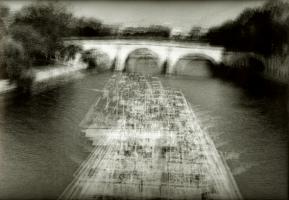
Paris 2000. Le Bateau Mouche
Jerome Sans, director of the Tokyo Palace, Paris, has written eloquently about Pruszkowski's technique and his place in contemporary art:
"Krzysztof Pruszkowski tells us about the saturation of pictures in the modern world and the short-sightedness they create. A world where pictures are at the same time over-represented and fleeting, very talkative and restrained. Pictures always competing with each other, ending up stacked upon each other and finally disappearing in the daily stream of information issued by the media.
"Although the advent of Modern Art was generally considered as being the demise of pictures, there have never been so many since then and this bulimia overwhelmed our "Gutenberg Galaxy". However, the addition of all these pictures does not formulate or provide more sense to the world. On the contrary, not only do they tend to eliminate each other, but they also seem to create an additional distance, caused by their short-life.
"By subjecting his photographic topics, whether they are taken from the media or not, to "multiple superimpositions," Krzysztof Pruszkowski demonstrates the limits of the new reality--a reality which dissolves the notion of time picture by picture and, in a way, accounts for the speed which characterizes some video clips, the instant circulation of information and pictures around the world. We are no more in the order of the snapshot.
"His process: to subject the picture to up to 60 or 70 superimpositions. He names it "photosynthesis"--the gathering of information which could not be covered in one shot. The process is often limited to six or seven superimpositions. The picture doubles, triples, reaches the edge of fuzziness, and provokes a conflict between global and individual, between singular and plural.
"Therefore, when Krzysztof Pruszkowski addresses one of today's most difficult artistic concepts, which is the portrait, he does not provide a cohesive picture of the model, but rather the search and formulation of an individuality composed by superimposing different faces. For example Jean-Paul Sartre and Simone de Beauvoir (1984), or sometimes more generic, as if he was slowly building up a photofit (portrait-robot), like "Miss Europe" or as with "The President"(1984), with the merged portraits of six American presidents.
"This is in fact the new representation of the individual within the present social code, commonly named the typical profile for job selection. The notion of individual has gone from specific to generic, from unique to interchangeable, like the objects that have changed from original to reproduction. A plural vision of a world where "production" is a key word, and where the stock exchange is the new identity, the institution on which everything relies. "The Paris Stock Exchange" (1986), this place of urgency par excellence where everything is evaluated, is also probably a metaphor for the circulation of money around today's artwork.
"The artist does not interpret the world by establishing its apparent form but rather restores its complexity and places it in a context which reveals the richness of its metamorphosis. A brilliant concept."
In 1981 Pruszkowski photographed the young, independent peasant union "Solidarnosc". These images were published in the French daily "Liberation". The images were eventually made into posters, drawing attention to occupied Poland under marshal law.
Between 1981 and 1986, he created his big project about the disappearance of a Parisian tramp (clochard) named Alexander, which was exhibited in both Poland and France.
In 1984, he exhibited at the Deuxieme Triennale Internationale de Photographie, Musee de la Photographie.
In 1986 he produced synthesis portraits of 60 first and second-class passengers of the Parisian metro (when the French subway system was divided into two classes), which drew attention to the class-related character of racism. This pairing was perhaps one of his most celebrated and important early Photosynthesis works.
In 1988 the Musee de l'Elysee in Lausanne presented a major retrospective exhibition, entitled: "Monopose--No. Photosynthese--Si", which was accompanied by the book "Pruszkowski-Photosynthese".
Soon after this exhibition he received the Leonardo de Vinci grant from the French Ministry of Foreign Affairs to stay and study in Egypt.
In 1989 he returned to his hometown of Kazimierz nad Wisla, where he published his portofolio, "A Manifest on Architectural Form: K.M.K. (Konstrukcja Materializacji Konceptu)".
In 1993 the National Museums of Warsaw and of Wroclaw, Poland devoted considerable space to a large Pruszkowski exhibition, where his photosyntheses were exhibited with corresponding objects borrowed from various Egyptian museums. These exhibitions were documented in the book "Photology Egypt, Pruszkowski's Light and Photosynthesis" (Fotologia Egipt - Swiatlo i Fotosynteza, Pruszkowski).
The next year Pruszkowski was invited to take part in the exhibition "Europa-Europa: 100 years of Central and Eastern European Avant-Garde". And in 1996 he exhibited at "Double Vie--Double Vue" at the Fondation Cartier pour l'Art.
In 2000 Pruszkowski received a grant from the Polish Ministry of Culture.
He is currently working on monumental objects relating to historical events. He currently lives and works in Paris. He has just finished a controversial series on Iraqi terrorist hostage takers, which was recently shown in Poland.
Pruszkowski's work is in the following public institutions:
M.N.A.M. Centre Georges Pompidou, Paris, France
Muzeum Narodowe, Worclaw, Poland
Musee de la Photographie, Charleroi, Belgium
F.R.A.C. Languedoc Rousillon, France
Fond National d'Art Contemporain, Paris, France
Parma University Museum, Italy
Bibliotheque Nationale, Paris, France
Bibliotheque Historique de la Ville de Paris, France
B.W.A. Lublin, Poland
Artotheque de Nantes, France
Artotheque de Vitre, France
J.I.P.A.M. Montpellier, France
International Polaroid Collection
Musee Carnavalet, Paris, France
Metropolitan Museum, New York, U.S.A.
Musee d'Aurillac, France
Musee de l'Elysee, Lausanne, Switzerland
Musee Arthur-Batut, Labruguiere, France
Cabinet des Gravures et des Estampes, Dresden, Germany
Staatsgalerie, Stuttgart, Germany
Paris-Audiovisuel, Paris, France
Muzeum Nadwislanskie, Kazimierz nad Wisla, Poland
Muzeum Okregowe, Konin, Poland
Liechtensteinische Landesbibliothek, Vaduz, Liechtenstein
Museum of Fine Art, Houston, U.S.A.
Maison Europeenne de la Photographie, Paris, France
Fondos del Centro Andaluz de la Fotografia, Almeria, Spain
Collection de la Ville de Castres, France
Collection de la Ville de Frouard, France
Moravska galerie v Brno, Check Republic
Musee Pierre Noel, Saint Die-des-Vosges, France
Muzeum Sztuki, Lodz, Poland
Collection INSA, Lyon, France
Collection QPN, Nantes, France
From the March 2007 issue of Black & White magazine, which featured Pruszkowski:
By Dean Brierly
Asked to describe his work, Krysztof Pruszkowski replies, somewhat provocatively: "I take photos of things which have never existed, do not exist, will never exist."
Such a response might conjure images of blank photographic paper--conceptualism taken to an absurd degree--but in fact Pruszkowski achieves this seeming dichotomy through an innovative process he developed called "photosynthesis." It consists of superimposing multiple images of the same subject or similar subjects, all done in camera without recourse to digital techniques.
But we're not talking about simple double or even triple exposures: Pruszkowski makes anywhere from six to 60 such superimpositions. This extreme layering is a way of deconstructing clichés, forcing viewers to look beyond the physical surface of a subject to the complexity lurking beneath. As the superimpositions build up, the border between objectivity and subjectivity breaks down. For Pruszkowski, this is when things become interesting.
"My goal," he says, "is for viewers to pass into the other side of the mirror like Alice in Lewis Carroll's 'Alice's Adventures in Wonderland'. I want them to lose themselves and penetrate the subconscious, in the process becoming a little freer in their way of looking at and thinking about the world around them."
"Doloreze Nude" illustrates the interpretative possibilities of photosynthesis. The multiple hands speak to a woman's "ownership" of her own body, while allowing for the possibility of her being "owned" sexually by another. It also poses an ironic critique of how the media typically images the female body as sexual commodity. And yet it also exists as a beautiful, abstract celebration of the human form.
Born in 1943 in Kazimierz, Poland, and initially trained as an architect, Pruszkowski moved to Paris in 1965 for that year's International Congress of Architecture. However, he took up photography in 1970, supporting himself through reportage, publicity and fashion. The latter helped inspire the development of photosynthesis in 1975.
"In trying to understand why clients selected certain kinds of models, I began to make composite portraits of women with different physiques. That led to making composite images of all kinds of subjects. In this way I started creating visual prototypes for a new visual language."
His multifaceted aesthetic has been further influenced by the philosophy of Jacques Derrida, who pioneered the concept of subjecting a text to multiple meanings and interpretations; and Maurice Merleau-Ponty, whose theory of the primacy of perception assigns responsibility to individuals to actively interpret the world before them.
All of which helps account for Pruszkowski's impatience with the limitations of the traditional photograph. "Single images are boring," he states. "We can learn from those images nothing more than what we are able to see directly."
While many would undoubtedly contest his view of single images as "boring," there's no disputing the fact that Pruszkowski's approach creates a unique interpretative dynamic between image and viewer.
An apt example is "The Palace of Science and Culture, J.W. Stalin, Warsaw," a photosynthetic deconstruction of a notorious architectural symbol of Soviet power. The ominous aura is enhanced by street lamps that convey an atmosphere of total surveillance, while the multiplied cars all moving in the same direction bring to mind the enforced conformity of Polish life during Russian rule. Yet the blurred edges of the building, as well as its placement in the far distance, also suggest its fading importance. Ambiguity rules.
In these and numerous other images, Pruszkowski challenges viewers to think in many directions at once. But while the photographer's work teems with his thematic preoccupations--loss of individuality, social manipulation, the unreliability of media imagery--he is careful to avoid didacticism.
"I don't care what is currently 'important,' he says. "I work by intuition regarding problems that I am concerned about. In point of fact, everything in our life is social and political."
Exhibited and Sold By
Contemporary Works / Vintage Works, Ltd.
258 Inverness Circle
Chalfont, Pennsylvania 18914 USA
Contact Alex Novak and Marthe Smith
Email info@vintageworks.net
Phone +1-215-518-6962
Call for an Appointment


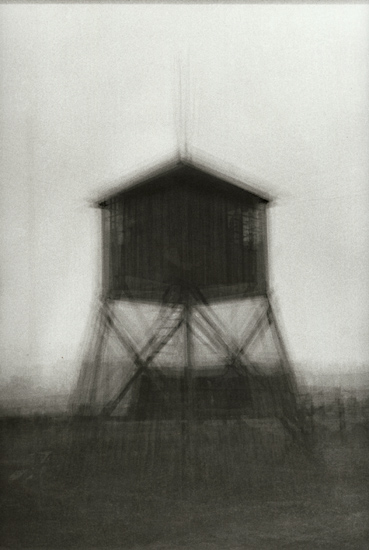
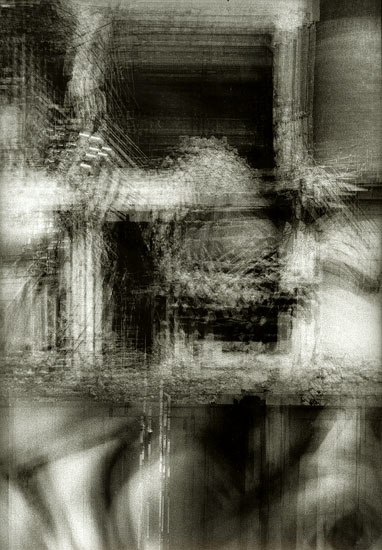
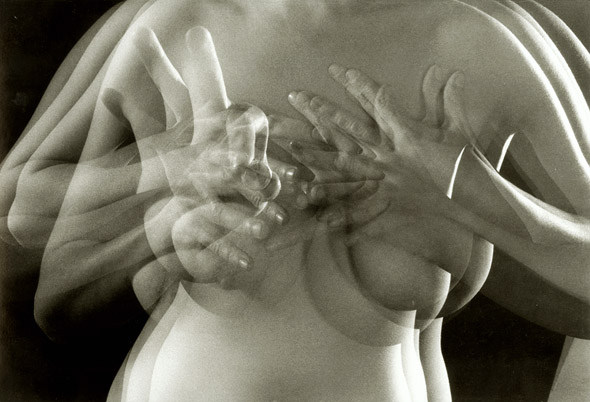
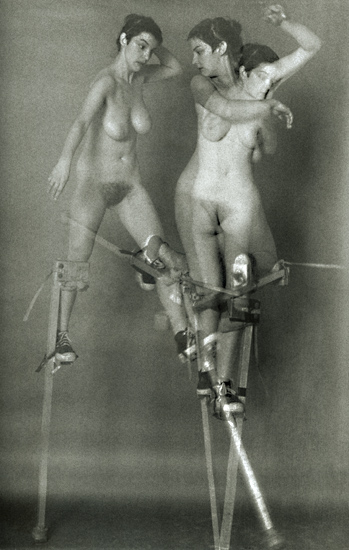

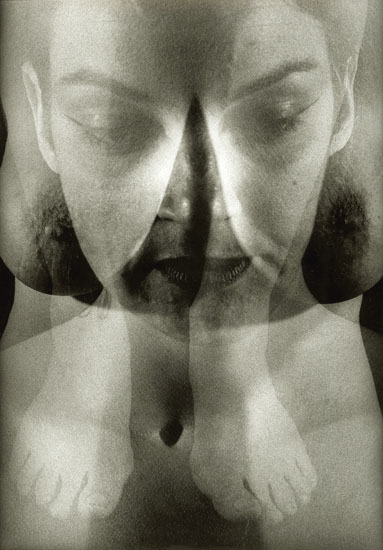
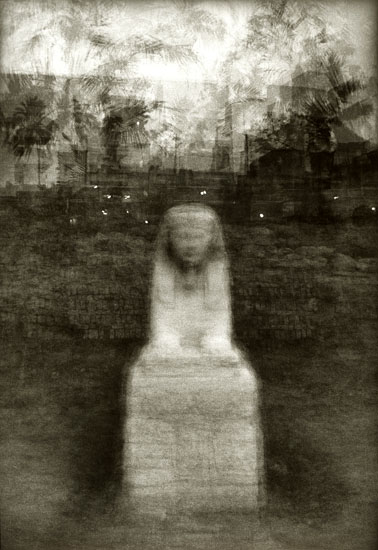
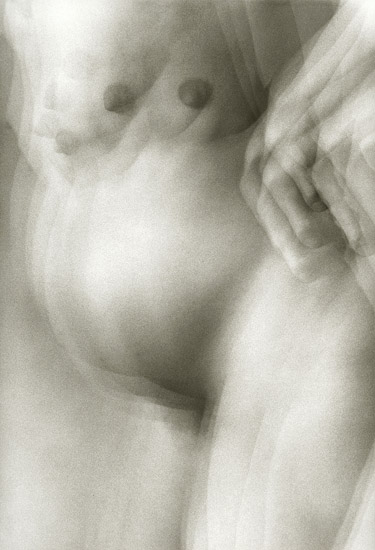
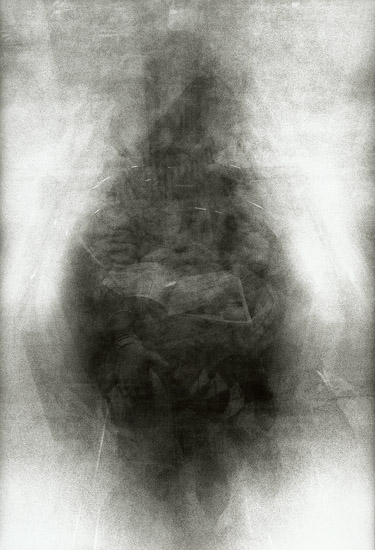
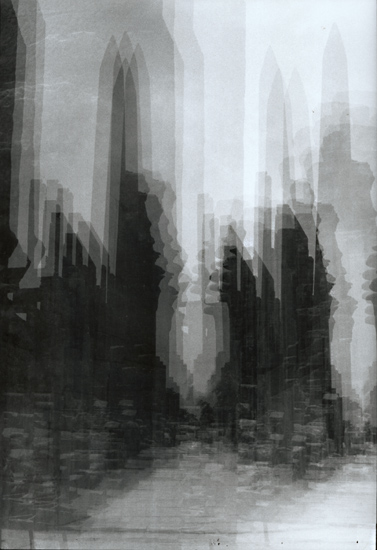
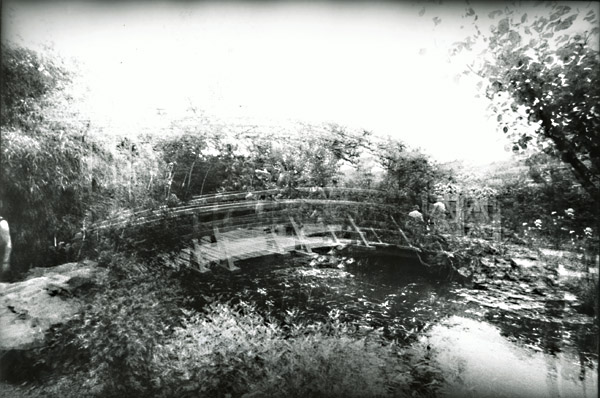

Share This